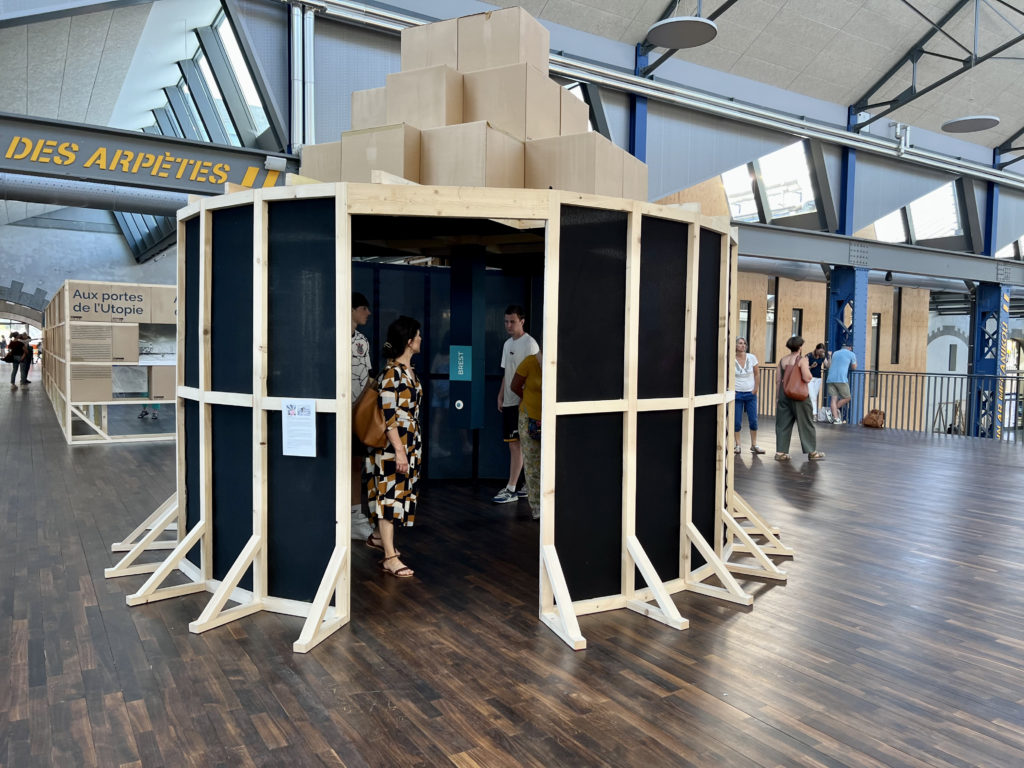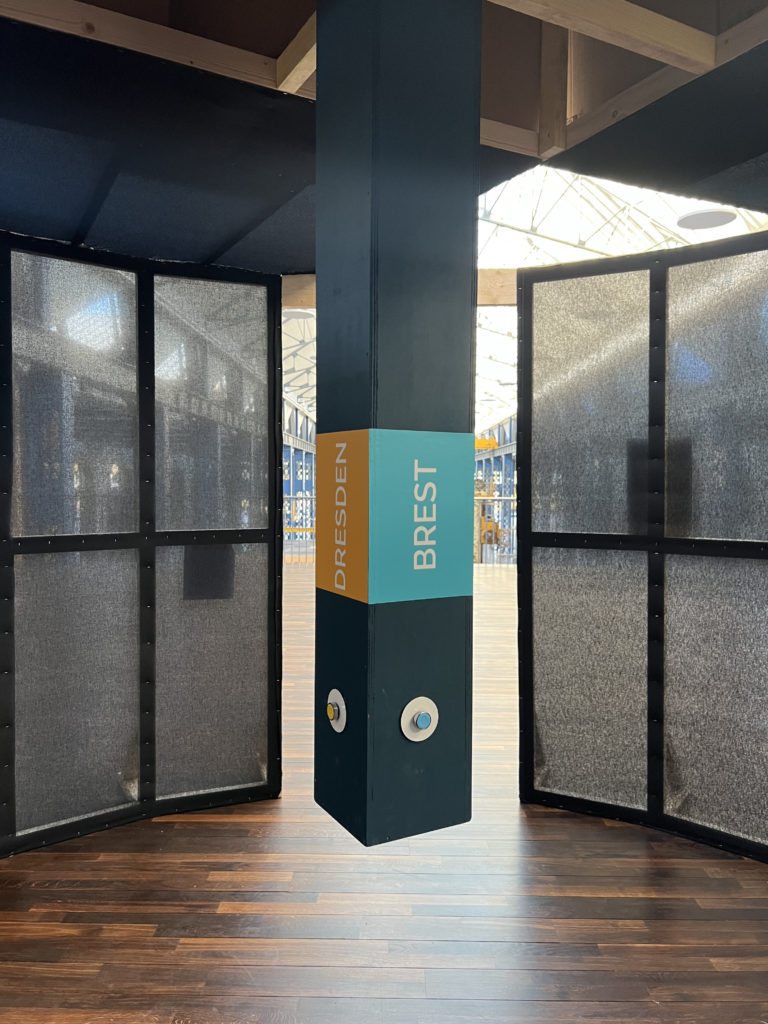About Residency:
During my residency, I had the opportunity to spend three weeks in Brest and three weeks in Dresden, with the goal of getting to know these cities and exploring their culture, history, and everyday life. Throughout my time there, I collected sound materials by taking walks with my recorder, aiming to capture typical and distinctive details.
The experiences in Brest and Dresden were completely different. Brest felt like a stoic city that had endured a lot, with a strong military presence. However, it also had a rebellious, rough, and youthful energy, akin to a city of punk culture, with a focus on technology and engineering. On the other hand, Dresden had a gentle, sophisticated, and older charm, with a romantic atmosphere. It was known for its classical music and classical culture.
I was fortunate to be present in Dresden on February 13th, which is a day of remembrance for the Bombing of Dresden by the Allies in 1945. I incorporated audio recordings of the bells ringing for 10 minutes throughout the entire city, as a tribute to the victims of the bombing. I also included recordings of people and the mayor’s speech in my composition.
“Converging Visions” is a sound installation that explores the different reconstruction approaches of Brest and Dresden after the Second World War. Brest was rebuilt with a new urban design, while Dresden aimed to restore everything as it was before the war. Despite these differences, the sound installation combines the sounds of both cities, symbolizing their connection. The term “converging visions” represents the contrasting reconstruction approaches and how the installation unites them.
Inside the sound installation, you will find three buttons. Pressing one button plays “the music of Brest,” while the other button plays “the music of Dresden.” Pressing the third button simultaneously allows both compositions to coexist, mirroring the simultaneous existence of the two cities.
These compositions take you on a journey through space and time. In the Brest composition, it starts with sounds recorded in Les Capucins, serving as the starting point. Suddenly, synthesizers resembling a plane disrupt the moment. The composition also includes the original sounds of Spitfire planes, as well as metal sounds, the sound of the Recouvrance Bridge, and workers building ships. These metal sounds come together to form a strict and rhythmic composition. In contrast, the Dresden composition begins with the date February 13, 2022, which is Remembrance Day. It incorporates the mayor’s speech and sounds from the city. Plane sounds interrupt this moment as well. The composition then features the sounds of bells from Frauenkirche and the melody from Zwinger’s Glockenspielpavilion.
22.06.2023 Opening at the Les Ateliers des Capucins, Brest
15.12.203 Opening, Transportation Museum, Dresden



